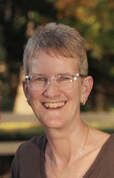|
When my daughter was younger, she used to love to teeter-totter with her older brothers. However, she was at a real disadvantage in that activity because she weighed dozens of pounds less than they do. Left to her own resources, she would spend the entire time in the air while they sat on the ground- definitely a dull prospect for both of the participants! Rather than fault her for being too light, I stepped in and provided modifications to enhance her success. Giving a push on her side of the teeter-totter dropped her to the ground, and releasing her brought squeals of delight as she rose up high into the air again.
A social interaction is much like a teeter-totter. It takes two or more participants to engage in a social interaction, and both--or all--need to be working hard, paying attention, and making necessary adjustments to ensure the success of the interaction. Much of what society views as “success” (graduation, completion of a task, a promotion, winning an award, owning a home, or going up and down on a teeter-totter) is based on--or is achieved only through--an ability to be successful in social interactions. Like my daughter’s struggle to teeter-totter with brothers who weigh more than twice as much as she does, a large percentage of the population struggles to be successful in social interactions. In fact, one in 89-150 people is diagnosed with an autism spectrum disorder (ASD). Due to the nature of this diagnosis, most of them find that their greatest hurdle in life is interacting successfully with other people… Autism is more than a diagnosis. People with ASD are children, siblings, students, college students, grandchildren, parents, grandparents, and friends. They may be professors, scientists, bus drivers, or factory workers. They connect with us at home, school, or in various places in the community, including our workplaces. They have much to offer us, beginning with their unique--and often refreshing--perspective on life. We can play an important role in promoting social understanding as we work to balance the social teeter-totter with individuals with ASD. Rather than dwelling on their differences or difficulties and watching them squirm, adults and peers, family members, friends, and colleagues are capable of stepping in and giving explanations, accepting differences, or making modifications to ensure their success. Approached in this balanced manner, social interactions are much more enjoyable—and successful-- for everyone! © 2006 Laurel A. Falvo, originally written for The Gray Center’s “SUN News” and published in The Grand Rapids Press.
0 Comments
Your comment will be posted after it is approved.
Leave a Reply. |
Social IncitesSocial Incites™ are insights which incite (encourage) personal and interpersonal growth. Social Incites™ are written by Laurel Hoekman, Certified Family Life Educator, Certified Employment Training Specialist, Social Coach, Consultant, and Registered Social Service Technician (Michigan). For 15 years, Laurel was the Executive Director of The Gray Center for Social Learning and Understanding, and has also been a CASA volunteer (Court Appointed Special Advocate for children who are abused and neglected). She is passionate about helping individuals and families (including those affected by autism spectrum disorders) identify and achieve their goals, particularly in building and maintaining effective social connections. Archives
April 2023
|
Social Incites, LLC, 1100 Cobblestone Road, Holland, MI 49423, 616.422.5886


 RSS Feed
RSS Feed